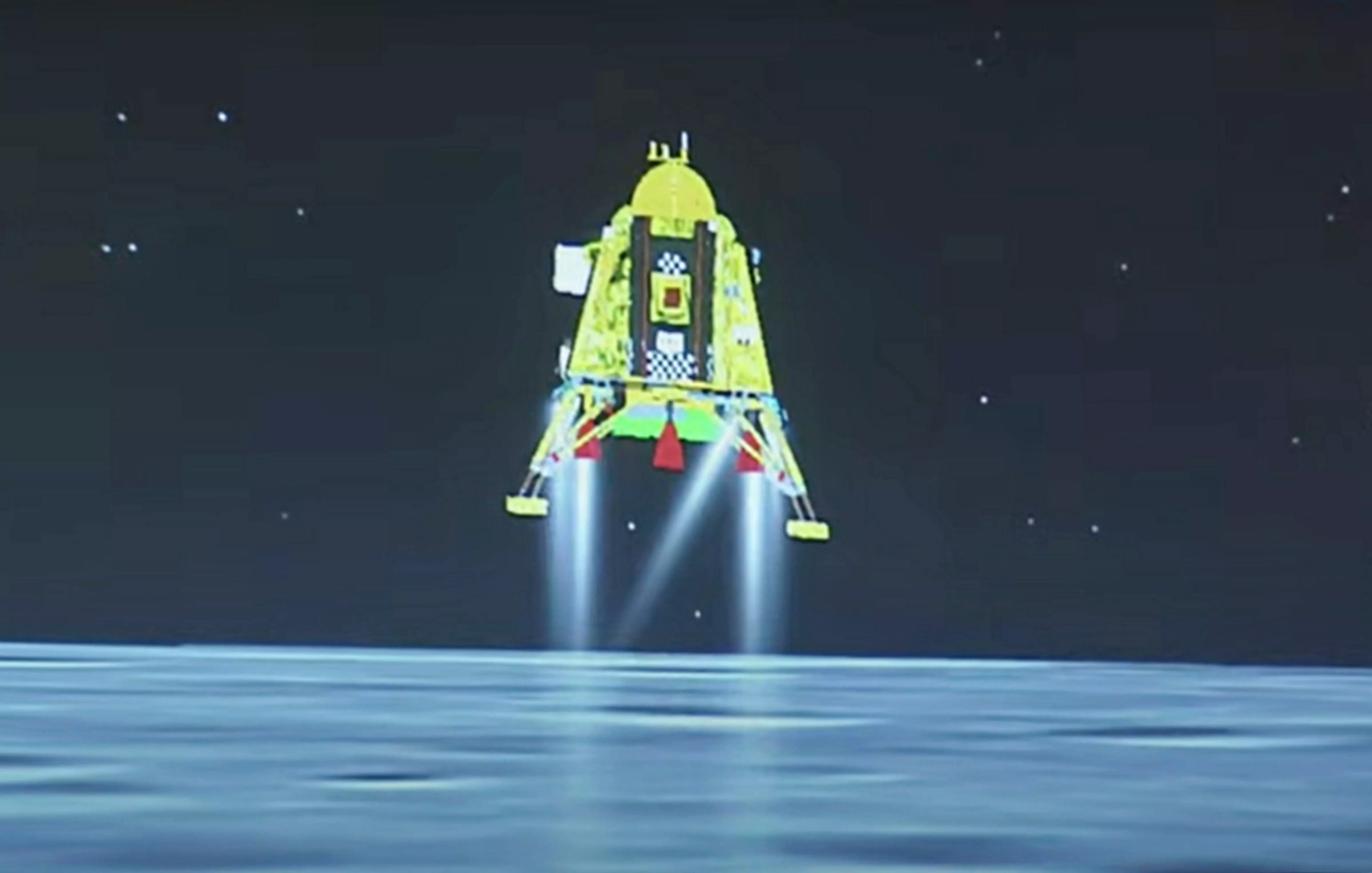Indranil Banerjie | The space sector in India on threshold of take-off, but few more steps needed

India’s spectacular Chandrayaan-3 moon landing and the successful launch of its solar observation satellite Aditya-L1 last year have been so pathbreaking that they have overshadowed several other equally dramatic developments in the country’s space sector. Ironically, these successes have also underplayed the fact that India still needs to take several major steps before it can truly become a dominant player in the rapidly spiralling global space sector.
Space is literally exploding with ideas, innovation, massive investments, startups and technologies that are already transforming lives and the capabilities of nations. India without doubt has forced its way into an expensive and exclusive club of just a handful of nations but it still has some distance to go.
This was more than obvious in India’s dilemma with its latest communications satellite GSAT-20 (renamed as GSAT-N2). When NewSpace India Ltd (NSIL), the commercial arm of the Indian Space Research Organisation (Isro), decided to put a 4.7 tonne communications satellite in orbit it had to scout for a foreign satellite launcher because Isro’s biggest rockets cannot carry satellites weighing beyond four tonnes into high orbit. In the end, Elon Musk’s SpaceX was contracted to launch NSIL’s latest satellite. The launch of the Falcon-9 rocket that will carry Isro’s latest satellite is expected to take place in the second quarter of this year.
SpaceX’s massive Falcon-9 rocket, currently the biggest player in the global space industry, is capable of placing 26.7 tonnes in higher orbits. The US-based company has even more ambitious plans in the form of the behemoth Starship rocket series which could carry as much as 150 tonnes into orbit.
Next in line is the Boeing-Lockheed joint venture United Launch Alliance (ULA), which hit a milestone earlier this month with the successful launch of its next-generation Vulcan rocket. This rocket can lift up to 27 tonnes of satellites in a low orbit or 14.5 tonnes to higher orbits.
The third mega player is Blue Origin, promoted by Amazon founder Jeff Bezos. This company is fast developing a launcher called New Glenn. It has already built a successful rocket engine, the BE-4 series, which was used to power the Vulcan rocket.
China is the other major space power but concentrates on launching its own satellites and probes. Russia appears to have fallen behind in the race, following the Ukraine war and its associated sanctions. The European Space Agency’s Ariane-5 rockets, which could carry up to 10 tonnes to high orbits has been retired and its bigger replacement, the Ariane-6, is to be test launched in July this year. Similarly, Japan’s space agency Jaxa is fast powering up to develop its heavy lift capacity rockets named H-3.
Dozens of governments and private players are racing to develop satellite launch capabilities. The proliferation of players is a direct consequence of the fact that the demand for space launches is expanding faster than capacity. India, for instance, operates just about 53 satellites whereas it needs about 500. Space industry watchers claim it will take a full decade to clear the launch backlog.
Going by one estimate, in the last five years (January 2019 to December 2023), as many as 527 space operators from 72 nations deployed spacecraft into orbit. The United States led with 115 operators, followed by China with 103, Russia with 41 and Japan with 24. India with 11 such organisations is eleventh on the list.
Huge opportunities exist despite the dominance of American companies. The global commercial space market was $400 billion in 2023 and is expected to balloon to $1 trillion by 2030. India’s share currently is a minuscule $8 billion.
Isro realises that to be a dominant player in the space sector, far more investment, private players and research capabilities are required. Unlike other government organisations, Isro has always had a culture of collaborating with private industry and academia. Now its chairman S. Somnath wants to take that to another level. Fortunately the government has agreed to prise open this sector, which till recently was guarded and closed.
Mr Somnath astounded Indian business last year when he declared that Isro “will no longer be a secretive organisation” and will transfer its knowhow to industry. Citing the need for huge investments, Mr Somnath felt the future lay in public-private partnerships.
The response to this opening up has been nothing short of spectacular. As many as 130 space startups are reported to have sprung up in the private sector in recent times. The country’s first private sector rocket was launched in late 2022, with more to follow.
Isro announced this month it would build future heavy launch rockets of the LMV-3 series that carried Chandrayaan-3 to the moon in collaboration with private stakeholders. Already, NSIL is working with Hindustan Aeronautics Ltd (HAL) and Larsen and Toubro to make five PSLV rockets. It wants to rope in more companies to launch smaller satellites into low earth orbit.
Isro has shown the path to success lies in technological development. The unprecedented success of the American “Magnificent Seven” (which include tech giants like Apple, Nvidia and Microsoft) and Taiwan’s chip-maker TSMC are testimony to the criticality of technological innovation in financial and geopolitical dominance.
Isro’s outstanding achievements in blazing a trail into deep space should be an inspiration for India’s academia, research establishments and industry. For, as the founder of India’s space programme, Dr Vikram Sarabhai, had famously said: “To us, there is no ambiguity of purpose… we are convinced that if we are to play a meaningful role nationally, and in the community of nations, we must be second to none in application of advanced technologies to the real problems of Man and society.”

